
“This blog first appeared in the ASQ Ottawa Valley Section newsletter. Bill Osborne has graciously agreed to its reproduction on this site. The story of the Asanko Mine in Ghana is a great example of merging indigenous and non-indigenous values for Quality and continuous improvement.”
Ruth Stanley
Guest Post
By Bill Osborne
In conjunction with the High Commissioner of Canada in Accra, Her Excellency Heather Cameron, (a.k.a my spouse!) I recently visited the NKRAN gold mine of ASANKO Gold in central Ghana.
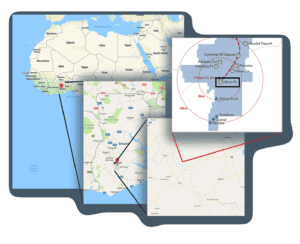
ASANKO is a Canadian company (Vancouver Headquartered) listed on the Toronto stock exchange. (TSX-AKG ).
The mine is expected to produce some 200,000 ounces of gold. At current prices that’s ~US$240,000,000. As gold mines go this is actually quite a small mine, but the scale is still mind wrenching. Here’s a picture of the pit – at this point it is 180 metres deep and expected to go to 400 metres.
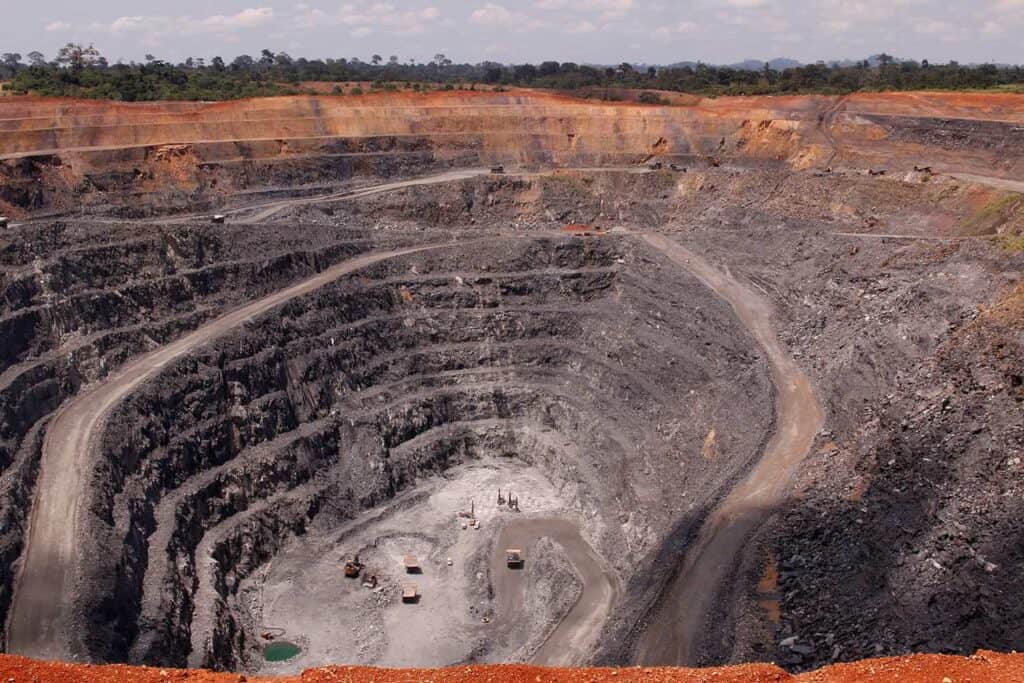
Those tiny toy vehicles at the bottom are 64ton dump trucks!
In my article published on http://asqottawa.ca/ (http://asqottawa.ca/hwemudua-the-symbol-for-quality-control) I talked about use of the West African Adinkra symbols and how many concepts are covered by those 200 year old symbols that have every relevance to Quality.
ASANKO has a wonderful 6 point value statement that incorporates specifically the Adinkra symbology in engaging their employees in the corporate philosophies…
 Caring (Akoma)
Caring (Akoma)
 Integrity (Osraame Nsorama)
Integrity (Osraame Nsorama)
 Team Work (Ese ne Tekyerema)
Team Work (Ese ne Tekyerema)
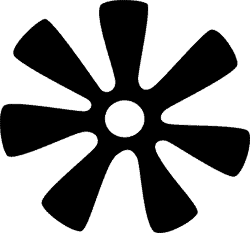 Innovation (Ananse Ntontan)
Innovation (Ananse Ntontan)
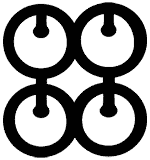 Commitment (Me ware Wo)
Commitment (Me ware Wo)
 Transparency (Nsaa)
Transparency (Nsaa)
In a environment with a large rate of illiteracy, these symbols are instantly understood among the local communities, and indeed were explicitly chosen in consultation and co-operation with the local communities.

Naturally open cast gold mining is a very hazardous operation. Safety and Responsibility is at the heart of ASANKO’s corporate culture, with the first statement in the values policy being “Our employees are at the heart of our safety culture.” To symbolise this the Adinkra symbol FIHANKRA is emblazoned on every piece of equipment in use and on the hard hats of every employee, as seen here on Mine Manager Charles Amoah .
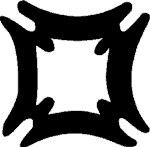 Fihankra
Fihankra
Fihankra can be literally translated as “house/home” and is the symbol of security and safety.
The deeply embedded safety culture is encapsulated in a “no blame, No shame” philosophy where any employee can point out a safety or health related matter to anyone. This was bought home to me when after boarding the car to take me back to Kumasi, the driver very courteously pointed out I was not wearing my seat belt and asked me to put it on.
In a culture where road safety is generally non-existent, and where drivers are generally seen as very low on the social scale, to see that this driver had no fear of any repercussions in pointing this out to what, to him, was a very high level visitor was remarkable.
 Commitment
Commitment
In the past gold companies have not always had the best reputation when it comes to either Health & Safety or Corporate Social Responsibility (CSR). ASANKO very much turns that reputation around,
with engagement of the community as a primary stakeholder and with their commitment to protecting and rehabilitating the environment. Partly this is a result of Ghana and Canadian CSR rules, but during my visit I was struck by how committed the management team was. I felt they would be doing this even if it wasn’t part of the regulations.
 Teamwork
Teamwork
The company sponsors on site vocational training, and we visited a bakery school and a construction apprentice school. Graduates of the training are offered positions at the company, but also take their skills back to the wider communities. Here we see a group in the construction welding class. I noticed especially the female representation in the class.

Ghana is one of the most egalitarian societies in Africa with female representation in every aspect of life, be it senior ministers, to humble security guards, or as here in the construction industry, in numbers somewhat surprising for what is traditionally a male culture.
The ratio of male to female employment is over 70%, on a par with North America.[1] The ratio in the higher income brackets is actually higher in Ghana than in North America.
[1] http://datatopics.worldbank.org/gender/country/ghana
 Caring
Caring
Rehabilitation of the environment is also a major part of operations at ASANKO. Although end-of-life of the mine is still several years away, planning and implementation of rehabilitation has already begun. The actual site had already been operated prior to ASANKO taking over, and ASANKO has been proactive in rehabilitating the former production areas, with replanting a continuing process, and a nursery for new plantings underway.
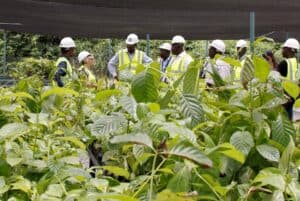
It would have been easy to just fly in various exotic easy growing cheap species, but ASANKO has decided to rehabilitate with entirely native species (some of which are difficult and temperamental to grow) To that end they have recruited from among the community plant gatherers who disperse into the surrounding forest and recover seeds and seedlings to bring into the ASANKO on-site nursery. This is a sustainable practice, because the vast majority of the wild seedlings would normally die off. Seedlings are recovered from a wide area so there is no concentration of removal. They currently have several thousand seedlings in cultivation, and a specially employed Ghanaian botanist to look after the nursery.
 Innovation
Innovation
Altogether the picture is of a socially committed sustainable effort. It should be noted as with all speculative mining ventures there are sceptical accounts of the probable success of the mine, however those are financial and business related concerns, and the companies own plans call for years of investment, and most significantly a spectacular 27km conveyor to link its newer northern mine to the NKAN processing plant. That conveyor if built would be the longest single flight conveyor in Africa, and possibly the world. I was struck by the engagement of the company with the communities along the proposed route, and the parallels with the Northern Canadian Native communities along proposed pipeline routes. The Adinkra symbology once again becomes vital – caring, integrity, teamwork, innovation, commitment and transparency – all of which will be necessary both on the ground and in the business spheres to ensure success of this project.
Many thanks to Mr Frederick Attakumah, ASANKO Corporate Affairs, for hosting our visit.
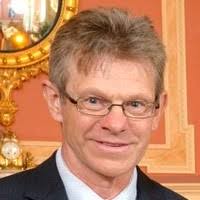
Bill Osborne is a long time member of ASQ Ottawa Valley. He is currently in Ghana, where he seeks to find quality in every aspect of Africa and continue with his lifelong education
https://www.linkedin.com/in/wosborne
http://www.billos.ca/Safaris/Ghana/index.html
Opinions and ideas in this article are entirely Bill’s own. Any mistakes, omissions or questions should be addressed to Bill Osborne.
